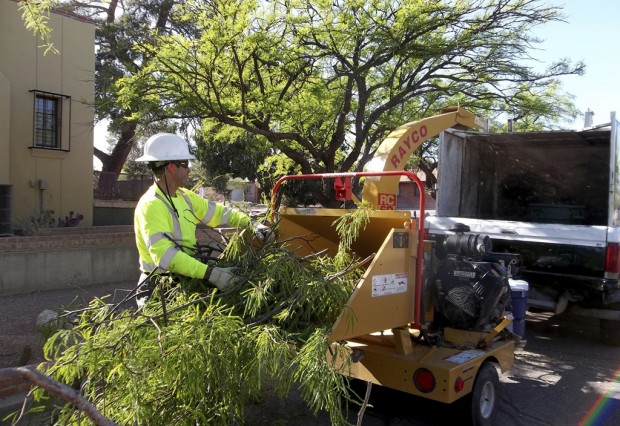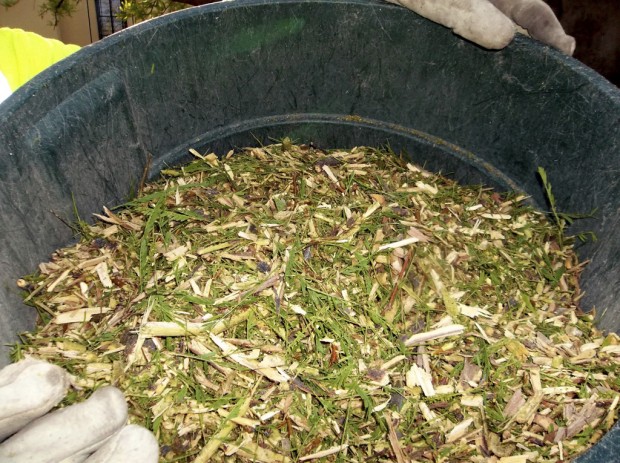Angelo Romeo's wife, Veronica, planted a lantana at their home several years ago.
It was the middle of summer, Romeo recalls, and the lantana wilted when it didn't get water every day, sometimes twice a day.
He decided to lay down a 2- to 3-inch layer of mulch under the ground cover. It made a difference.
"Rather than watering it once to twice a day, all of a sudden we would water every fourth day," he says.
That's the success story Romeo, co-owner of Romeo Tree Service, tells when talking about why mulch matters.
Mulch is material you use to shade soil.
"In the desert we do it to help cool down the soil and slow down the moisture evaporation," says Connie Howard, a horticulturist with Tucson Botanical Gardens.
Mulch also slows soil erosion and compaction and reduces weed growth.
TYPES OF MULCHES
• Organic: Litter from landscape clean-up. When organic mulch breaks down, it adds nutrients to the soil. Light organic mulch tends to blow or wash away.
Break up compacted mulch so it doesn't create a water barrier. Pull out sprouts from seeds in the mulch. Dig old organic mulch into the ground.
• Inorganic: Including rock, decomposed granite and pea gravel. These tend to stay in place and keep yards looking neat and dressed. They do not break down and add nutrients. They retain and reflect heat and light that could damage plants in the summer and provide warmth in the winter. Decomposed granite may create a water barrier.
• Manmade materials: Including shredded black-and-white non-glossy paper, evaporative cooler pads and landscape fabric. All are porous to allow water to seep through.
Do not use plastic, which blocks air from the soil, and kitchen scraps, which attract critters and look untidy.
APPLICATION
Native plants do not need mulch.
Lay between 2 and 4 inches of mulch around plants or anywhere you want to protect the soil.
Allow newly gathered organic mulch to die and dry out before spreading. Decomposing mulch draws nutrients out of the soil.
Do not allow mulch to touch the base of plants to avoid moisture damage.
For flower and vegetable beds, lay a dressing of one third mulch with two-thirds soil.
Don't call it fertilizer
Organic mulch isn't compost or fertilizer when it's first laid on soil.
It does eventually break down and slowly add nutrients to the soil. "In a sense, it is adding fertilizer," says horticulturist Connie Howard.
However, true fertilizing implies a chemical additive for a quick shot of nutrients, says Howard.
Organic mulch can be added to a compost pile, which is a mix of soil and decaying material that turns into nutrient-rich soil, she says.
Free mulch
• Arizona Tree & Landscape Service Inc., 790-1505. Make arrangements to pick up any quantity from the company's southeast-side site.
• Romeo Tree Service romeotreeservice.com/freemulch. Request a delivery from a nearby job site.
• T.L.C. Environmental Services LLC, 887-3829. Request a delivery from a job near your home.
• City of Tucson's Treecycle program, cms3.tucsonaz.gov/content/treecycle. Available for pickup in December and January at announced locations.
Contact freelance writer Elena Acoba at acoba@dakotacom.net





